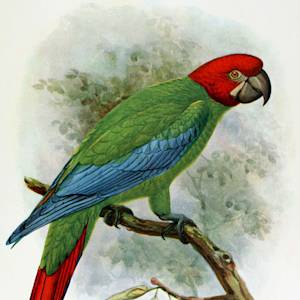Back from the Brink: Kākāpō
1995 CE • New Zealand
"The kākāpō is a species of ground-dwelling parrot native to New Zealand and its surrounding islands. It feeds on a wide range of seeds, fruits and roots and can live for up to 60 years. The birds were initially widespread across the country, but began to decline when humans first arrived around 750 years ago with Polynesian settlers hunting the birds and the introduction of rats. The arrival of Europeans in the 1800s accelerated the decline of the species with the introduction of more invasive species, as well as widespread habitat destruction. By 1995, there were only 51 kākāpō left in existence. A concerted effort following the establishment of the Kākāpō Recovery Plan saw the birds moved to four small islands off the coast of New Zealand where invasive species had been eradicated. Populations of the bird have now begun to grow. However, the small number of individuals left in the 1990s meant that the population went through a genetic bottleneck, where most of the species' genetic diversity was lost", impacting the kākāpō's ability to breed, causing concern amongst conservationists. In 2022, 252 kākāpō were estimated to be alive, a 25% increase from 2021 and the most the population had been in 50 years.
James Ashworth, "Breakthrough offers a lifeline for one of the world's most endangered birds," Natural History Museum, October 26, 2021.
Lucy Craymer, "New Zealand's endangered kakapo parrot gets a big population boost," Reuters, August 9, 2022.
Image: Jake Osborne via Flickr, Attribution-NonCommercial 2.0 Generic (CC BY-NC 2.0)


Learn about Maya Lin’s fifth and final memorial: a multi-platform science based artwork that presents an ecological history of our world - past, present, and future.

Discover ecological histories and stories of former abundance, loss, and recovery on the map of memory.

Learn how we can reduce our emissions and protect and restore species and habitats – around the world.

See how art can help us rethink the problems we face, and give us hope that each one of us can make a difference.

Help make a global memorial something personal and close to home. Share your stories of the natural world.


